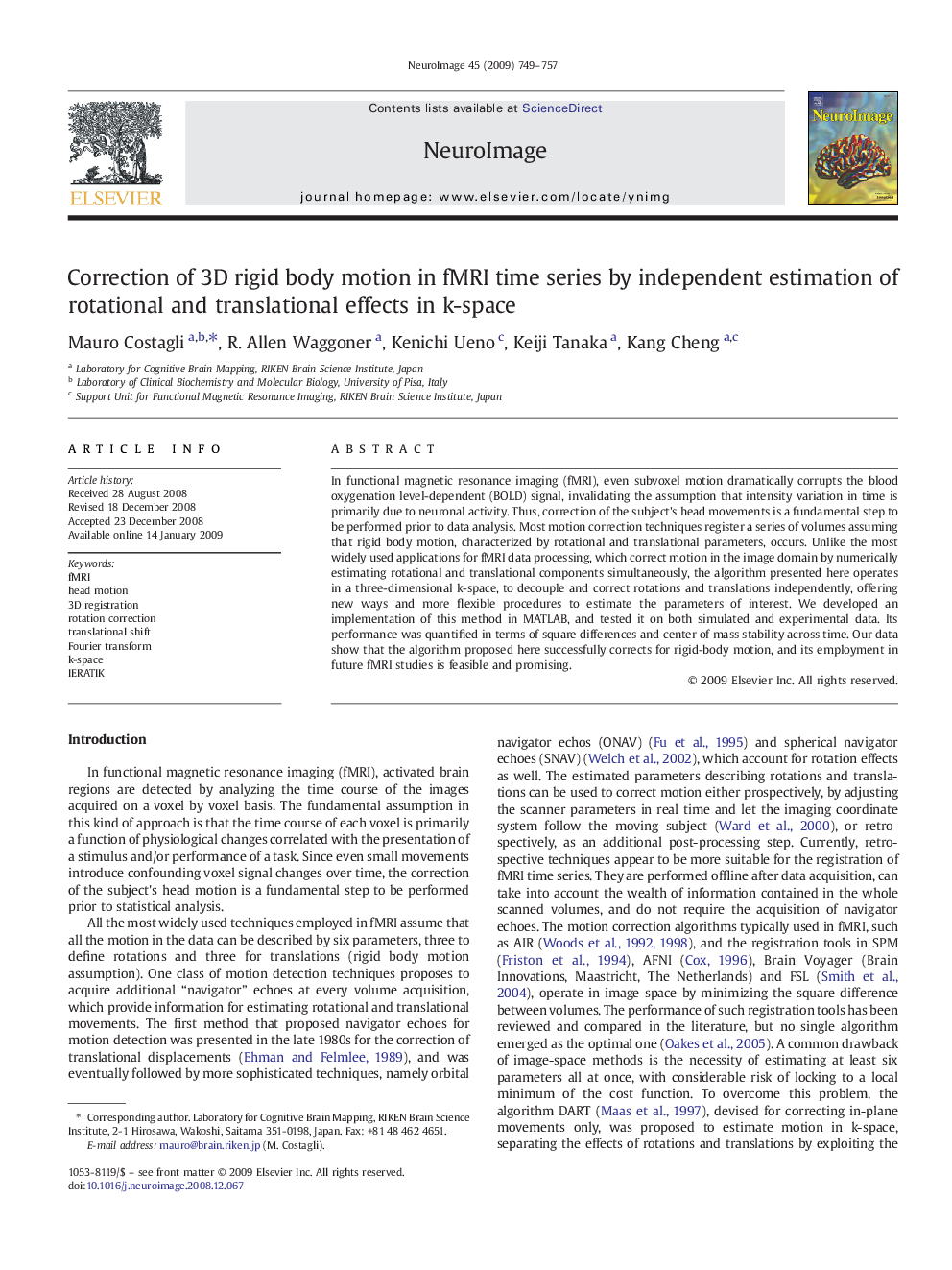| Article ID | Journal | Published Year | Pages | File Type |
|---|---|---|---|---|
| 6039155 | NeuroImage | 2009 | 9 Pages |
In functional magnetic resonance imaging (fMRI), even subvoxel motion dramatically corrupts the blood oxygenation level-dependent (BOLD) signal, invalidating the assumption that intensity variation in time is primarily due to neuronal activity. Thus, correction of the subject's head movements is a fundamental step to be performed prior to data analysis. Most motion correction techniques register a series of volumes assuming that rigid body motion, characterized by rotational and translational parameters, occurs. Unlike the most widely used applications for fMRI data processing, which correct motion in the image domain by numerically estimating rotational and translational components simultaneously, the algorithm presented here operates in a three-dimensional k-space, to decouple and correct rotations and translations independently, offering new ways and more flexible procedures to estimate the parameters of interest. We developed an implementation of this method in MATLAB, and tested it on both simulated and experimental data. Its performance was quantified in terms of square differences and center of mass stability across time. Our data show that the algorithm proposed here successfully corrects for rigid-body motion, and its employment in future fMRI studies is feasible and promising.
